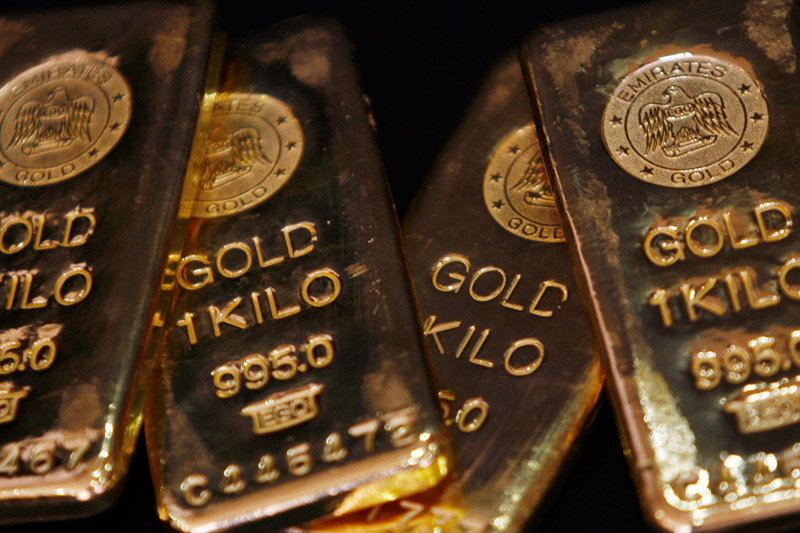Investing.com - Gold futures turned lower on Monday to fall from the highest level in nearly three weeks as the U.S. dollar and global equity markets rebounded from a brutal selloff in the prior session in wake of the Federal Reserve’s decision not to hike interest rates.
Gold for December delivery on the Comex division of the New York Mercantile Exchange hit an intraday peak of $1,139.40 a troy ounce before turning lower to trade at $1,131.60 during U.S. morning hours, down $6.20, or 0.54%.
The dollar pushed higher against the other major currencies on Monday, as the greenback continued to recover from the Fed's decision last week to hold interest rates at current levels.
The U.S. dollar index, which measures the greenback’s strength against a trade-weighted basket of six major currencies, was up 0.4% at 95.75 early Monday.
Meanwhile, global equity markets rose along with other risk-sensitive assets, such as oil and copper, recovering from steep losses suffered Friday.
Gold rallied to $1,141.50 on Friday, the most since September 1, after the Fed left short-term interest rates unchanged, amid concerns over soft inflation and the effects of recent market volatility on the U.S. economy.
The central bank said it wanted to see "some further improvement in the labor market," and be "reasonably confident" that inflation will increase before hiking rates.
Most market experts now expect the Fed will begin raising rates in December.
Gold fell to a five-and-a-half year low of $1,072.30 on July 24 amid speculation the Fed will raise interest rates for the first time since 2006 at some point this year.
The timing of a Fed rate hike has been a constant source of debate in the markets in recent months.
In the week ahead, investors will be turning their attention to Wednesday’s index of manufacturing activity from China for a fresh indication on the strength of the global economy.
Market players will also be focusing on U.S. durable goods data as well as reports on U.S. home sales to gauge the likelihood of a near-term interest rate hike.
